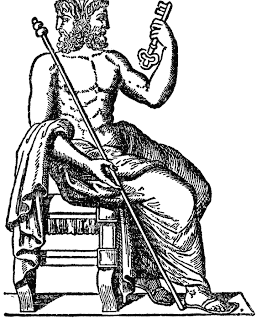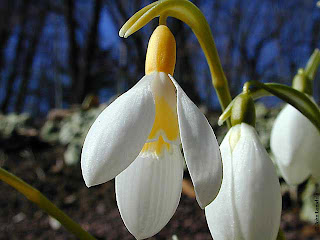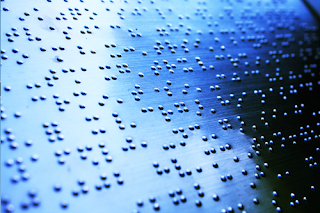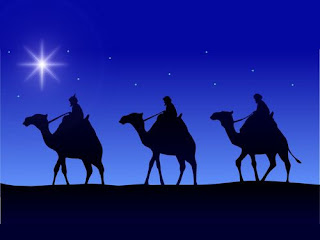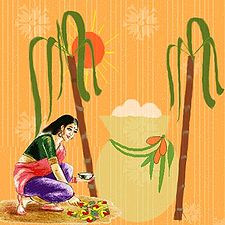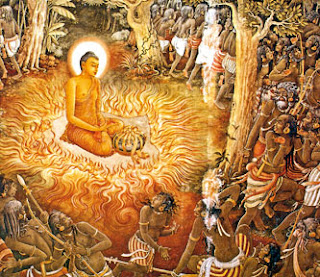Imperium: The
Peak of Roman Ambition
Imperium,
in the Roman state was the supreme administrative authority vested in
certain individuals, to command in war and originally to interpret and execute
the law including the power to impose the death penalty. Imperium, as a
source of law existed from the very beginning, during the monarchy vested in
the king (rex) who was the head of government, commander of the army,
head of state, chief priest, judge and legislator. Imperium in a broad sense is the
supreme kingly “power vested by the state in a person to do what he considers
being in the best interests of the state". Imperium derived from the Latin verb, imperare
(to command), served as a source of law through those whom it was invested.
In Rome after the establishment
of the republic, two magistracies (consul & praetor) possessed the imperium
but anyone within the scope of his magistracy could be vetoed by a magistrate
having imperium maius, a higher degree of imperium or through the equal
power of his colleague (intercessio). The expansion of Rome led to the creation
of Proconsuls and Propraetors who were vested with imperium but
restricted to their provinces. After the conversion into an Empire the Emperor
held immense power including the imperium which he used to diminish the
power of the other magistracies and councils. The person with imperium
carried an ivory baton surmounted by an eagle as his personal symbol of office
and was escorted by lictors (attendants) bearing the fasces (traditional symbol
of imperium).
The Kingly
Power
With his imperium,
the Roman king as chief executive
had the power to enforce all laws, as the chief legislator formulated and
proposed legislative proposals as deemed necessary and as judge adjudicated all
civil and criminal cases. The imperium of the king was held for life and
protected him from ever being brought to trial for his actions. It was granted
to him by the Comitia Curiata by means of lex de imperio. Therefore the King weilded power over the Senate, an advisory council composed
of Patrician elders selected by the king. However his legislative authority even with imperium
was curtailed in the instance of sanctioning law since the senate’s sanction
was imperative to pass a new law.
His imperium together with regnum (regal
power) gave him the authority to dismiss the advice of the senate although he
was bound to consult the body. His power as elected by the people preceded the
power of the Comitia Curiata, which was an exclusive council of
patricians composed of the curiae into which the tribes of ramnes,
tities and luceres were subdivided. The king in his capacity to make
laws, issued Royal Statutes (leges regiae) the only source of law at the
time however were subject to the consent of the Comitia.
Retention of Imperium Despite the Fall of Monarchy
After the dismissal of Tarquinius Superbus, the
seventh king, in 510 B.C. a republic was setup with two magistrates called Consuls
(consules) replacing the king but endowed with the power of imperium.
This however did not include the power to head religious affairs which was now
given to pontifex maximus. According to scholar Thomas “The extent of
the erstwhile kingly power was not limited but it appears to have been the
belief of the founders of the republic that to have two officers of coequal
power, each able to place a veto on the proposal conduct of the other would effectively
prevent a recrudescence of despotism”.
In order to reduce the burden on the consul,
another magistracy was created of that of the Praetor (praetor urbanus)
who was also given the power of imperium, but his main function was
civil jurisdiction. The expansion of Rome formed another praetor (praetor
peregrinus) to handle issues regarding foreigners. Other than these the
extraordinary magistracy of Dictator (magister populi) and his deputy (magister
equitum) possessed the imperium. Appointed by one of the consuls for
a period of 6 months during times of emergency the dictator had the summum
imperium which confirmed by the comitia, gave him absolute power over his
decisions without an appeal as well as a veto thus affecting the
laws passed by the assembly (leges) as well as the advise of the senate
(senatusconsulta).
The consul had unlimited power in legal,
administrative and military affairs and though the administration of justice (iurisdictio)
was transferred to the praetor, he retained his right to issue decrees or
edicts (ius edicendi) and his right to compliance therewith. The consul with higher imperium could veto the actions of the praetor
and therefore impact the edicts of this inferior official (minor collega)
as well. Although he consulted the senate in almost all proposals
before he placed them at the assembly, the advice given by the elders was not
legally binding on the magistrates with imperium. The consul had the
power to convene assemblies and put forward proposals which were most of the
time sanctioned by the assembly according to his will. The extent
of the force of imperium can be seen by the fact that it was only by
legislation that a citizen had the right of appeal to the assembly (provocatio
ad populum) from a magisterial order for his execution.
Praetor’s Imperium: Revolution of
Roman Civil Law
As a source of law the praetor’s imperium
had a greater impact on the other sources since he was entrusted with the
administration of justice. His edicts known as ius praetorium formed the
ius honorarium, the law of magistrates derived from honor or
office. Through this they administered the ius civile and ius
gentium, the edicts taking the form of edictum perpetuum, issued at
the beginning of office and edictum repentium, issued during the year. Their edicts proved to be an ideal framework for
law reform since they included new remedies and defences as well as for the
overriding power to act in the interests of the state even if it was in
contradiction to the civil law.
In the late republic praetors became the leading
legal reformers with a more radical approach and effectuating remedies for
fraud, duress, protection of propriety, succession to property on death and
recognition of informal agreements. In administering justice if
the praetor stated in edict judicium dabo or agere permittam
he made praetorian law not civil law and if he stated potestatem agendi
non fasciom he did not repeal civil law but determined its
effects.
Praetor Urbanus was vested with legis actiones (the
actions-at-law), a system where he decided whether to have a trial and the
appropriate form, but his imperium was restricted to follow the ius
civile. The foreigners did not qualify for the legis
actiones so praetor peregrinus lent the sanction of his magisterial imperium
to a court of recuperatores in cases regarding foreigners by stating the
issue in the decree of appointment and then ordered the judges by virtue of his
imperium to find for or against the defendant. Therefore
the task of formulating the issue was taken care of by the praetor himself in
the decree, which is called the formula.
A Power that knows NO limits???
The imperium had its limits since the Tribune
(plebis tribunus), representative of the plebians, although lacking the imperium
could veto all magistrates (ius intercedendi) except for the
Dictator and Censor and was immune from prosecution and injury (sacrosanctitas). The concilium plebis tributum the assembly of the
Plebians was conevened by the tribunes and the resolutions passed, plebscita,
were of considerable significance since they gained legal value after lex
hortensia in 287 B.C. and binding on the imperium holders. During
times of crisis the senate passed the senatusconsultum ultimatum
which directed all magistrates to see that the state is not harmed. Imperium holders and Censors in charge of state discipline had power to
inflict chastisement and the latter with their ‘nota censoria’
could remove magistrates and senators for improper conduct.
Principate: On the Road to Supremacy
The dysfunctional reign of Julius Caesar, with
Marc Anthony offering him the crown resulted in a murder leading to a state of
anarchy, finally ending in a war where Octavian emerged victorious. The senate
bestowed the jubilant Octavian with the honour of princeps (first
citizen) and the title augustus.
His imperium existed by virtue of imperium
maius and imperium proconsulare which provided him
authority over the government including the power to preside over the senate
and popular assemblies and as imperator, command of the Roman army. Furnished with the potestas tribunicia (tribunician powers) his
office and person became sacrosanct. Moreover he was
endowed with rights to declare war, ratify treaties and negotiate with foreign
leaders.
Although the republican institutions remained, the
emperor was pre-eminent and their roles gradually waned. A dyarchy
by title the senate and the emperor shared power, with the latter possessing
more power. If the senate passed a law it was Augustus who had
framed it and without his approval nothing could be done and even in the
provinces his imperium prevailed over the governors. The
importance of plebiscita and leges declined since the popular
assemblies practically became mouthpieces of the princeps but the senatusconsulta now became legally binding under the will of the
emperor, as he was its head.
His power to create law under the imperium
became apparent since his approval was essential for laws and resolutions
passed by the senate and the popular assemblies but later he created law on his
own. But he was not bound by law ‘princeps legibus solutus
est’. According to Gaius this was because the people had transferred
their power to the emperor by virtue of the law ‘lex regia’.
The prominence of the consul in creating law had
diminished, the praetors continued to be elected and issue edicts in the early
years of the Empire, but their significance declined as constitutiones
(imperial decrees) took over. New posts were created by the
emperor which superseded the Republican magistracies and among
these were the various praefecti (prefects) like the praefectus praetorio
(second in command after princeps); but they were mere mouthpieces of
the emperor. The main source of law during the Empire was the work
of jurists through their opinions, responsa. The emperor
however influenced this by granting the best known jurists the right to give
opinions (ius respondendi) by the authority of the princeps.
“A decision given by the Emperor has the force of
a statute” says Ulpian, a jurist. Once the jurists ceased to influence the law,
the imperial decrees became the exclusive legal reform instruments. From the decrees, edicta were the edicts of the Emperor issued on an
unlimited range of matters, decreta were decisions by the Emperor on
legal disputes with the law at his discretion in its interpretatio, mandata
were instructions given by the Emperor to subordinate officers, particularly
provincial governors mainly dealing with criminal and administrative law and rescripta
were written responses from the princeps to questions or petitions by
public bodies, officials or citizens. Thus the Emperor with his imperium
made a huge impact on the other sources of law as well as institutions.
Dyarchy disposed: Imperium in the
Dominate
Dismissing the republican façade, Emperor
Diocletian acquired the title of dominus (lord of the Roman Empire)
which led to nothing more than an absolute monarchy. An autocracy
was established where the senate although remained as an important
constitutional body was limited to its ancient traditions. The leges
and plebiscita had become completely ineffective. The
emperor possessed the exclusive power of imperium maius and
virtually absolute legislative power as the jurists receded and the imperial
decrees became the most significant source of law.
While dominus retained all the powers of
the princeps and the latter’s impact on the sources of law, even the
smallest obstacle vanished which might question his power. Adding to all these
the decreta were collected and they became binding precedents,
and the magistracies with imperium such as consuls and praetors
gradually diminished until
the autocracy was complete.
Imperium: Ambition Achieved
Therefore the Imperium as a source of law
inflitrated itself into almost every sphere of Roman law, life and government.
From a kingly power it divided during the Republic only to gain momentum in the
Principate and finally to reach its climax during the Dominate, achieving the
ambition of a supreme authority vested in a single person with the ability of
having a monumental impact on Roman law.













